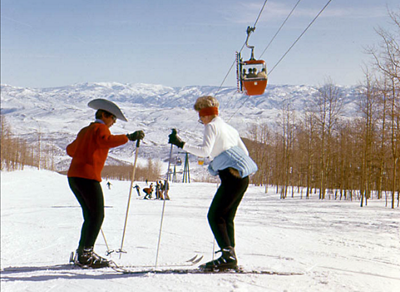
This season Park City Mountain celebrates its 60th winter season. As the season approaches, we’re looking back on the rich history of Park City Mountain from its earliest days to the world-class destination it has become today.
The 1960s were a defining time in American history across culture, politics, and art. In Park City, local leaders made a bold decision to redefine Park City's history and place in America, laying the groundwork that would change the area from a fading mining town to a world-class winter sports destination.
Park City Mountain opened its slopes on December 21, 1963, as Treasure Mountains by United Park City Mines. It featured the world’s longest gondola at the time, the Prospector double chair, and Silver King J-bar as well as base and summit lodges.
The mountain’s story began two years prior to its opening when members of United Park City Mines hatched a plan to revitalize Park City’s economy and transform the mining town into a year-round recreation resort. Mining officials applied for a $1.2 million loan through the 1961 Area Redevelopment Act, a federal program that targeted business development in urban and rural depressed areas. There was no movement on the application until August 1962, when a group of Utah publishers were invited to the White House for lunch with President Kennedy. Among the invited publishers was Jack Gallivan, then-owner of the Salt Lake Tribune, who mentioned the unfulfilled loan application to the President. Two weeks later, loan in hand, United Park City Mines began construction for Treasure Mountains.
When Treasure Mountains opened, it boasted the country’s longest gondola. Multi-colored gondola cabins carried four passengers each, two and a half miles up the mountain from the base area at what today is the Mountain Village base area to an angle station near the top of present-day Town Lift, and on to the top of the mountain, where Summit House is now located. The gondola transported thousands of skiers 2,300 feet up the mountain until it was retired in 1997.

